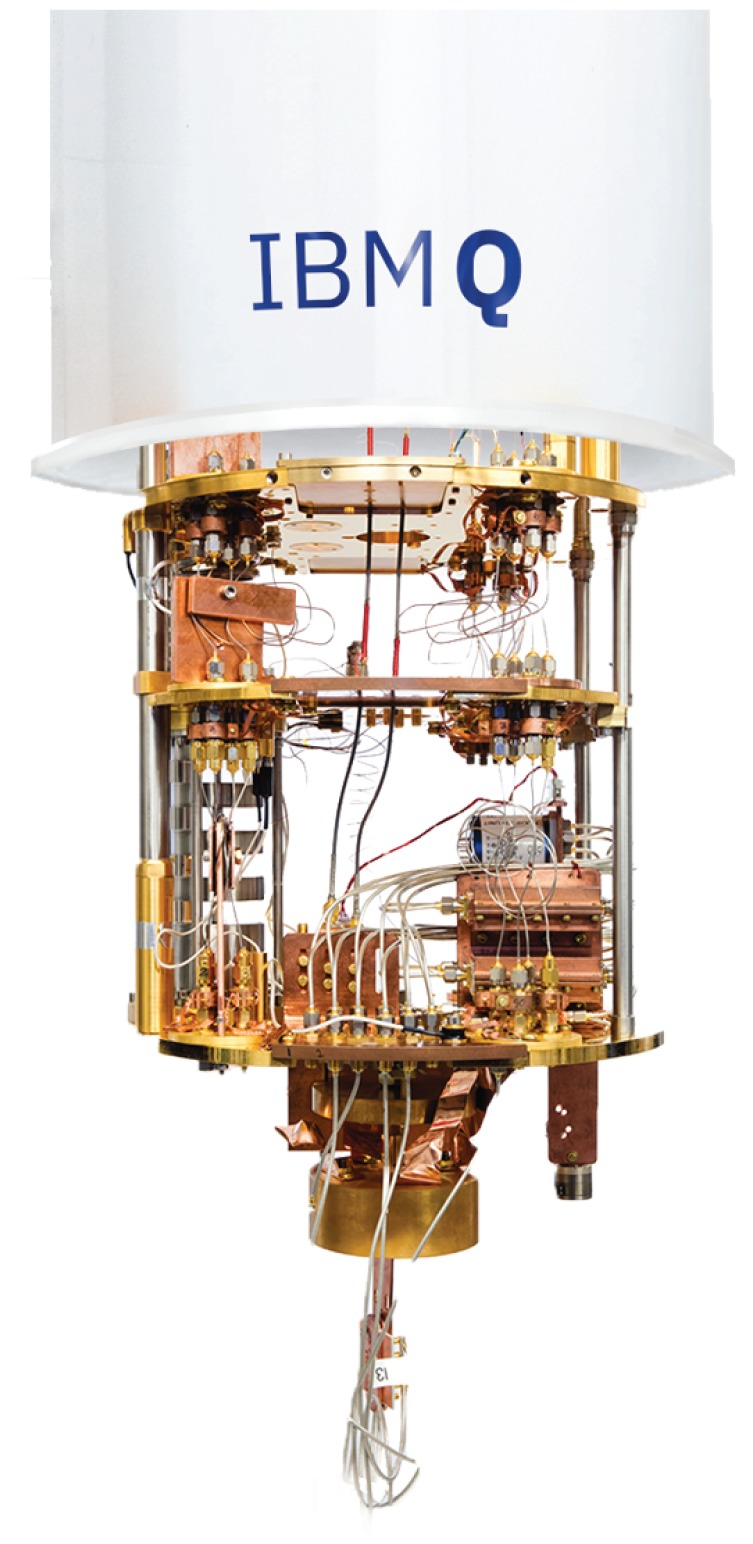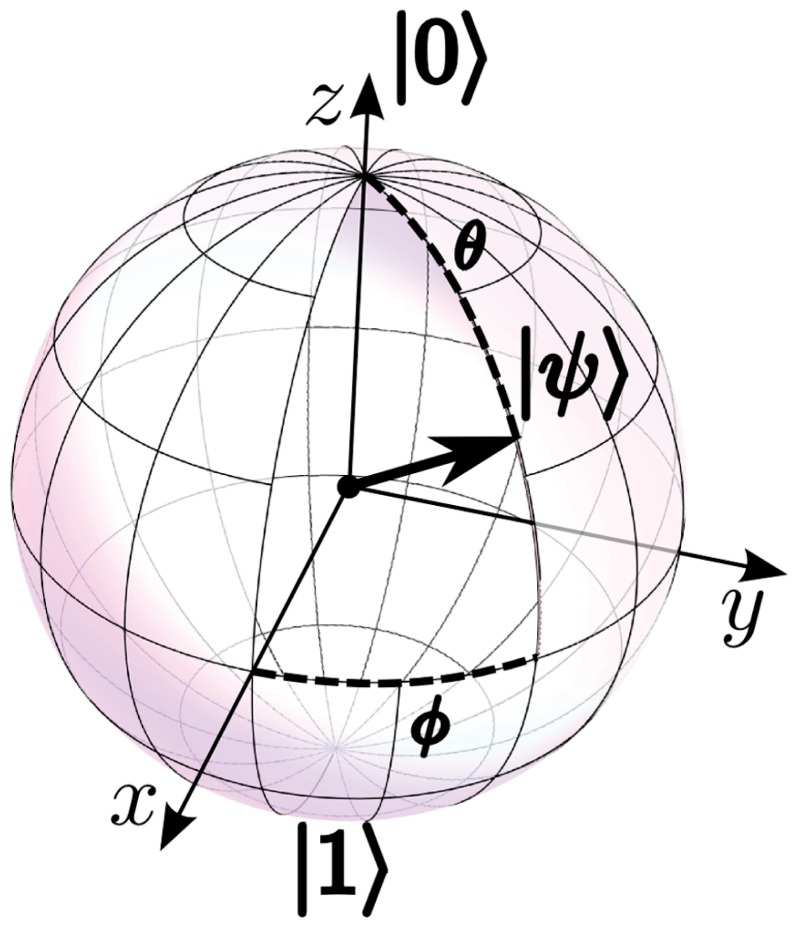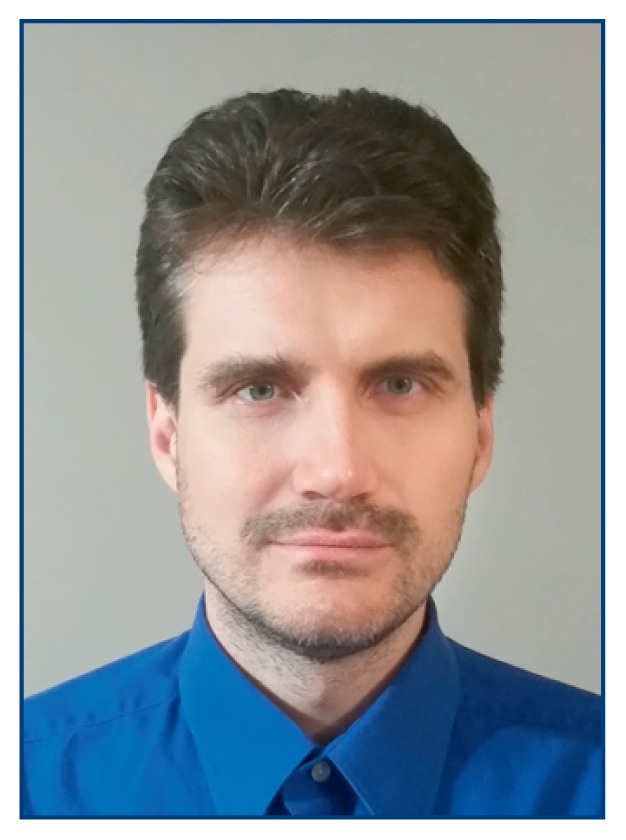Introduction
We may be at the advent of a revolution in computer applications in clinical care and medical research. Quantum computing can exponentially advance computational power and promises to usher in a new epoch in computing technology. Quantum computing compared to current computing could be what the first personal computer was to Charles Babbage’s 1833 primitive computer the ‘difference engine”.
A Patient Encounter in the Age of Quantum Computing
Ms. Jones is at her annual follow-up for long term cancer screening. She had tissue sparing breast cancer surgery 20 years ago and has since been cancer free. Today she goes to the high speed imaging center and meets with her physician, Dr. Doe, 20 minutes after the scan. Dr. Doe brings up results of her imaging on the electronic health record. Ms. Jones is calm as all her medical records are secured with unbreakable quantum encryption. The quantum imaging software identified a 1/10th mm square cluster of cancer cells near her original surgery site. Due to her history and after confirmation by the radiologist, Ms. Jones is scheduled for high precision radiation treatment the following week. A quantum computer is used to direct a radiation beam that destroys the cancer cells with extreme precision and spares all surrounding tissue. This rapid detection of a tiny cluster of cancer cells and their destruction is one of many potential advances in medicine that could occur pending the realization of quantum computing.
Many people are familiar with IBM’s Watson computer which famously beat past Jeapordy! champions in 2011, or Google’s AlphaZero machine learning chess algorithm that soundly defeated the best brute force computer chess champion in 2017. In 2018, IBM Watson Health now promises to provide more efficient patient care, population health, improved quality and earlier diagnoses, such as finding cancer at an early stage.1 These ser vices are possible because Watson has been fed the American College of Physician Medical Knowledge Self-Assessment study guide and the Merk Manual of Diagnosis and Therapy.2 The computational power to generate diagnoses in real time or to increase the precision of imaging to detect early stages of cancer may soon push beyond the limits of the standard binary 0/1 system available to Watson. Private industry (Google, IBM, etc.) and government agencies are already investing into quantum computing and artificial intelligence systems to make this happen. Thus, IBM may be one of the first to impact health care through quantum computing or artificial intelligence.
What is Quantum Computing and Why is it Different than Our Current Computer Technology?
Quantum computing is a revolutionary concept in digital data processing based on the fundamental principles by which nature operates, i.e. quantum mechanics. With advancements in physics in the early 20th century, methods of observation and purity of materials reached the level at which some quantum phenomena became detectable. The best example of this is a regular transistor present in ever y modern computer or device. It operates by directing large clouds of carriers of electrical current using engineered materials and quantum-based principles (band structure, localized states, etc.). They produce behavior unusual for naturally found materials – an ability to precisely control current with current, or current via light, or light via current.
Recently, miniaturization of transistors, detectors, and, at the same time, access to extremely low temperatures (such as −273C) have opened the possibility to operate, observe, and, most importantly, isolate individual particles with their inherently quantum properties. These properties are one reason the desktop or laptop computers we use have little resemblance to quantum computers (see Figure 1). Even though theoretically established for over 100 years, these properties have only recently been observed and verified over a wide range of particles and systems. While being nonsense in our daily experience, quantum mechanics has already led to dramatic advances in a few specific areas in medicine (e.g., MRI, laser surgery) with potential to revolutionize medical research and clinical care.3 Because modern computers have largely saturated computational power and no longer grow exponentially as occurred in the last century, quantum computing, if realized, is the most promising technology for major advancements in processes currently beyond the reach of existing computing power.4
Figure 1.
An IBM Quantum Computer
All currently known and beneficial quantum algorithms that can run on quantum computers are based on the ability of the quantum system, upon certain rearrangement, to behave in unison. The system of many (quantum) particles, each holding a bit of information, behave as one – a property based on so-called quantum entanglement. For this reason, large chunks of data can be processed at once, operating essentially on only a few particles, that is, in a massively parallel manner. This will allow tasks5–7 that would require centuries of computing on a standard computer to require only a few minutes on a quantum computer.
A key challenge for quantum computers is to provide and maintain isolation of individual quantum particles (qubits, illustrated in Figure 2) involved in computation. Extreme and stable cooling is required to make wire circuits (or circuits made of other materials) behave in a quantum fashion. Cooling superconducting systems to about a 10 thousands of a degree above absolute zero creates the needed degree of isolation8 to form computational quantum particles (qubits). Operated by electrical signal from a classical computer, these systems must be maintained at these extreme low temperatures by a large refrigeration apparatus involving a rare helium-3 isotope. In these extreme conditions, quantum particles (qubits) remain sufficiently isolated, or coherent, for about 0.1 ms – a 10 thousands of a second.9 Some other systems based on natural and artificial atoms rather than metal wires have also reached similar isolation and operability.10,11
Figure 2.
A computational quantum particle – qubit – represented as a unit (Bloch) sphere. Unlike regular bit that takes values of 0 or 1, a qubit can take any values on a sphere, as represented by two angles. The poles correspond to classical 0/1 bit values.
At this time quantum computing is an academic domain with users able to access and run programs in the cloud using ‘IBM Q’. Yet larger and larger quantum computing devices have become commercially available12 and can perform a small number of operations on a relatively small number of quantum particles (qubits). Most of these systems are based on superconducting technology and can contain up to about 100 qubits. Some quantum computational devices have even been made publically available for the research community to test and investigate small quantum codes via web interfaces (e.g., IBM Q). All currently available quantum computational devices, however, are far from a functioning quantum computer as they are not yet able to run large codes or work with ‘big data’.
An important exception is one area of quantum computing - quantum cryptography.13 With significant government investments (NSA, DOD, DOE), quantum cryptography is being already used to secure communications.14–16 Standard encryption methods rely on a keycode for the user to access encrypted data. However, the key must be shared and can be decoded by unauthorized persons seeking to ‘hack’ a system. With quantum computing, the key and the data can be secured indefinitely with guaranteed unbreakable encryption. Such strong security is possible because quantum encryption relies on the laws of nature (quantum mechanics) to furnish it. Thus, cryptography is expected to be the first application of quantum computing to enter medical practice to secure medical records and communication.
If Quantum Computing Becomes Available for Daily Use What Can We Expect to Change in Medical Research and Delivery of Care?
Big data research and machine learning is likely to be one of the fields to advance quickly with the advent of real world functional quantum computers. Beam and Kohane17 provide an excellent description of machine learning, noting that there is a machine learning spectrum which runs from how much a predictive algorithm is driven by human decisions vs. decisions based on data. A statistical model requires human decisions about variable definitions and their inter-relationships. In machine learning, there are few assumptions and algorithms are derived by computer programs that evaluate millions of data elements and all their potential directions of effect and interactions. The more an algorithm is derived from raw data and with less human input, the more it fits into machine learning. Machine learning that informs clinical practice in real time depends on growing databases containing constantly updating medical record information and linked to other sources of data (e.g. wearable technology). To deal with this complexity future machine learning programs will require computational power of quantum computing to deliver results in real time. With more data informing predictive models and quantum computer power, the clinician may be able to select a therapy perfectly suited to an individual patient based on models continuously running and updated to predict treatment response while accounting for the numerous patient characteristics (race, age, gender, comorbidities, co-medications, genetic make-up, etc.) which contribute to outcomes.
With the first quantum computing devices becoming operational in around 2000, Parsons18 speculated that quantum computing applications would generate a new era in medical imaging. It is expected that a quantum MRI machine will generate extremely precise imaging allowing visualization of single molecules.3 Using artificial intelligence, quantum computing can be applied to interpreting diagnostic images. Not only will image detail be exponentially improved but the physician can be aided in interpreting results because efficient machine learning can train a quantum computer to identify abnormal findings with precision better than the human eye.2
In cancer treatment, quantum computing will contribute to improved therapies. Computers are currently used to deal with the thousands of variables used to develop a radiation plan that targets cancer cells without damaging healthy ones.19 Quantum computers would allow rapid and more precise radiation plans and allow comparisons between all possible approaches. The end result would be an ideal radiation dose pointed at the right target and thus lead to more effective treatment with reduced side effects.19,20
Machine learning and artificial intelligence have been used with traditional computing resources to interpret CT scans, aid surgical procedures and to analyze big data to develop predictive models of disease. Gulshan et. al.21 used machine learning and nearly 10,000 retinal images to create an algorithm that can detect diabetic retinopathy with high sensitivity and specificity. The authors note that this is an experimental design with no known clinical utility. If programs such as the one created by Gulshan and colleagues21 had the computational power of quantum computing, one could imagine running an algorithm in real time to help physicians accurately detect retinopathy, possibly at an earlier stage.
Machine learning holds great promise in eliminating most diagnostic errors related to reading imaging. Dilsizian and Siegel2 describe how artificial intelligence can overcome the source of diagnostic errors in medical imaging. Computers overcome human sources of error such as: being stuck on initial impression, over-reliance on context, drawing quick conclusions based on a previous case and failure to consider other answers once a conclusion is made.
The volume of material and speed of new research discoveries is over whelming. Even the best attempts at providing guideline driven, evidence-based medicine are challenged by the rapid creation of new evidence. Combining big data with quantum computing will provide access to the current evidence and enable meaningful use of the electronic data continuously generated in the deliver y of care. Realization of personalized medicine will need to draw on analysis of mega-data and bring together measures of physiology, imaging, genomics, wearable technology, screening measures, patient records, environment measures and more.20
Quantum computing holds no value to medicine without the parallel increase in availability of clinically meaningful data from numerous sources. Challenges to realizing a healthcare system where quantum computing uses decades of data from billions of clinical encounters and recommends a specific medication for a patient presenting with new onset depression, cancer, diabetes or any condition, will be overcome when data can be merged from multiple sources including existing patient data networks, bio-banks, and wearable health devices, etc.
Will the future include visits to virtual physicians? Most patients expect more than a pill when they seek care. Particularly when treatment involves greater risk as in surgery and when treatment effectiveness requires patient adherence to complex regimens. Quantum computing does not replace the doctor-patient relationship, transparency and trust required in shared decision making. Nor will a computer replace the ability of a physician to offer encouragement, empathy, social support and most importantly providing words of encouragement and a pat on the back, a handshake, a smile and even a hug. We must never underestimate the power of the social contract patients make with physicians and the support of doctors, nurses, staff play in healing. Computer algorithms, whether run on a “traditional computer” or a future quantum laptop computer, do not have feelings and will never be able to provide the impact of a surgeon’s promise to “get you through this procedure” or the reinforcing effects of a primary care provider’s encouragement to “walk just another 5 minutes” to enhance your health.
Summary
We may be at the dawn of a revolution in computing. At this time we can only point to experiments and speculate how quantum computing could improve imaging, diagnosis, treatment, and population health. It is yet to be determined if and when quantum computers will be accessible for daily use in medicine and research. We have numerous examples of machine learning algorithms and artificial intelligence that may leverage the power of quantum computing to deliver real time results. Until this level of access is available, quantum computing will remain the domain of researchers, not physicians.
Footnotes
Dmitry Solenov, PhD, (above), is in the Department of Physics, Saint Louis University, St. Louis, Missouri. Jay Brieler, MD, and Jeffrey F. Scherrer, PhD, are in the Department of Family and Community Medicine, Saint Louis University School of Medicine, St. Louis, Missouri.
Contact: dmitry.solenov@slu.edu
Disclosure
None reported.
References
- 1.IBM Watson Health. Enable Effective Care. [Accessed April 1, 2018]. 2018. https://www.ibm.com/watson/health/value-based-care/enable-effective-care/
- 2.Dilsizian SE, Siegel EL. Artificial Intelligence in Medicine and Cardiac Imaging: Harnessing Big Data and Advanced Computing to Provide Personalized Medical Diagnosis and Treatment. Curr Cardiol Rep. 2014 Jan;16(1) doi: 10.1007/s11886-013-0441-8. [DOI] [PubMed] [Google Scholar]
- 3.Sullivan MD, Edlund MJ, Fan MY, Devries A, Brennan Braden J, Martin BC. Risks for possible and probable opioid misuse among recipients of chronic opioid therapy in commercial and medicaid insurance plans: The TROUP Study. Pain. 2010 Aug;150(2):332–339. doi: 10.1016/j.pain.2010.05.020. [DOI] [PMC free article] [PubMed] [Google Scholar]
- 4.N MA, C IL. Quantum Computation and Quantum Information. Cambridge: Cambridge University Press; 2010. [Google Scholar]
- 5.LKG A fast quantum mechanical algoristhm for database search; STOC: ACM; 1996; p. 212. [Google Scholar]
- 6.Shor PW. Polynomial-time algorithms for prime factorization and discrete logarithms on a quantum computer. Siam J Comput. 1997 Oct;26(5):1484–1509. [Google Scholar]
- 7.Cleve R, Ekert A, Macchiavello C, Mosca M. Quantum algorithms revisited. P Roy Soc a-Math Phy. 1998 1969 Jan 8;454:339–354. [Google Scholar]
- 8.Devoret MH, Martinis JM. Implementing Qubits with Superconducting Integrated Circuits. Quantum Inf Process. 2004 Oct;3(1–5):163–203. [Google Scholar]
- 9.Rigetti C, Gambetta JM, Poletto S, et al. Superconducting qubit in a waveguide cavity with a coherence time approaching 01 ms. Phys Rev B. 2012 Sep 24;86(10) doi: 10.1103/PhysRevLett.109.240505. [DOI] [PubMed] [Google Scholar]
- 10.Kennedy TA, Colton JS, Butler JE, Linares RC, Doering PJ. Long coherence times at 300 K for nitrogen-vacancy center spins in diamond grown by chemical vapor deposition. Appl Phys Lett. 2003 Nov 17;83(20):4190–4192. [Google Scholar]
- 11.Koehl WF, Buckley BB, Heremans FJ, Calusine G, Awschalom DD. Room temperature coherent control of defect spin qubits in silicon carbide. Nature. 2011 Nov 3;479(7371):84–U108. doi: 10.1038/nature10562. [DOI] [PubMed] [Google Scholar]
- 12.Sullivan MD. Who gets high-dose opioid therapy for chronic non-cancer pain? Pain. 2010 Dec;151(3):567–568. doi: 10.1016/j.pain.2010.08.036. [DOI] [PubMed] [Google Scholar]
- 13.Bennett CH, Brassard G. Quantum cryptography: Public key distribution and coin tossing. Theor Comput Sci. 2014 Dec 4;560:7–11. [Google Scholar]
- 14.BK, CCWL, RH, et al. Provably secure and practical quantum key distribution over 307 km of optical fibre. Nat Photonics. 2015;9:163–168. [Google Scholar]
- 15.Pugh CJ, Kaiser S, Bourgoin JP, et al. Airborne demonstration of a quantum key distribution receiver payload. Quantum Sci Technol. 2017 Jun 1;2(2) [Google Scholar]
- 16.Yin J, Cao Y, Li YH, et al. Satellite-based entanglement distribution over 1200 kilometers. Science. 2017 Jun 16;356(6343):1180–1184. doi: 10.1126/science.aan3211. [DOI] [PubMed] [Google Scholar]
- 17.Beam AL, Kohane IS. Big Data and Machine Learning in Health Care. Jama-J Am Med Assoc. 2018 Apr 3;319(13):1317–1318. doi: 10.1001/jama.2017.18391. [DOI] [PubMed] [Google Scholar]
- 18.Parsons DF. Possible Medical and Biomedical Uses of Quantum Computing. Neuroquantology. 2011;9(3):596–600. [Google Scholar]
- 19.Pariente P. Quantum computing set to revolutionise the health sector. L’Aterlier BNP Paribas; 2015. [Google Scholar]
- 20.AR Quantum Computing and Health Care. BMJ Techlogy Blog. 2017;2018 [Google Scholar]
- 21.Gulshan V, Peng L, Coram M, et al. Development and Validation of a Deep Learning Algorithm for Detection of Diabetic Retinopathy in Retinal Fundus Photographs. Jama-J Am Med Assoc. 2016 Dec 13;316(22):2402–2410. doi: 10.1001/jama.2016.17216. [DOI] [PubMed] [Google Scholar]





